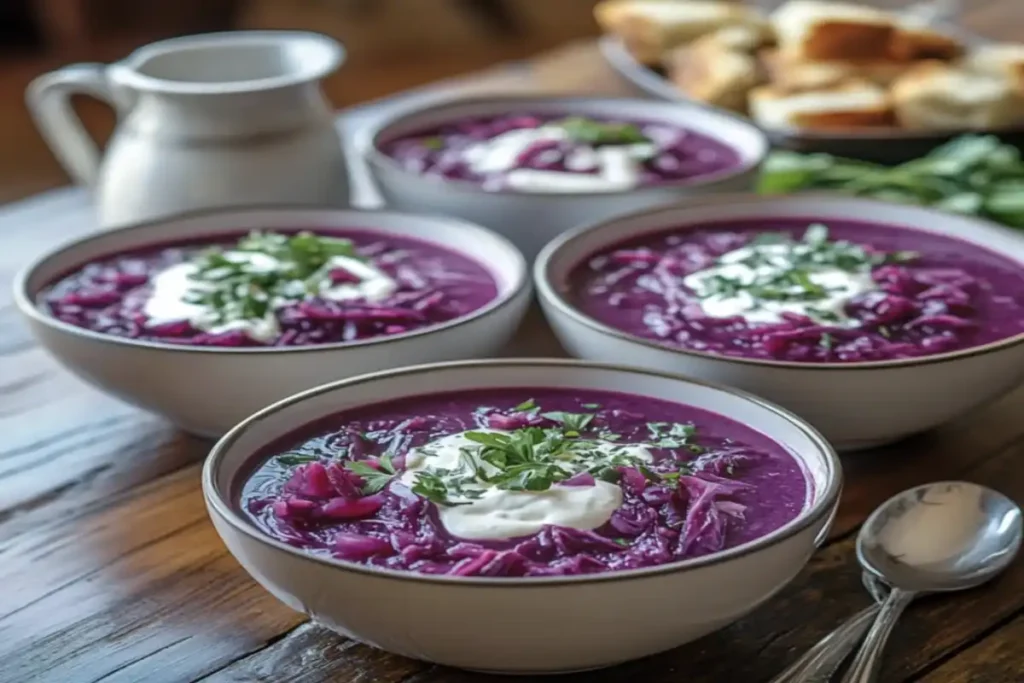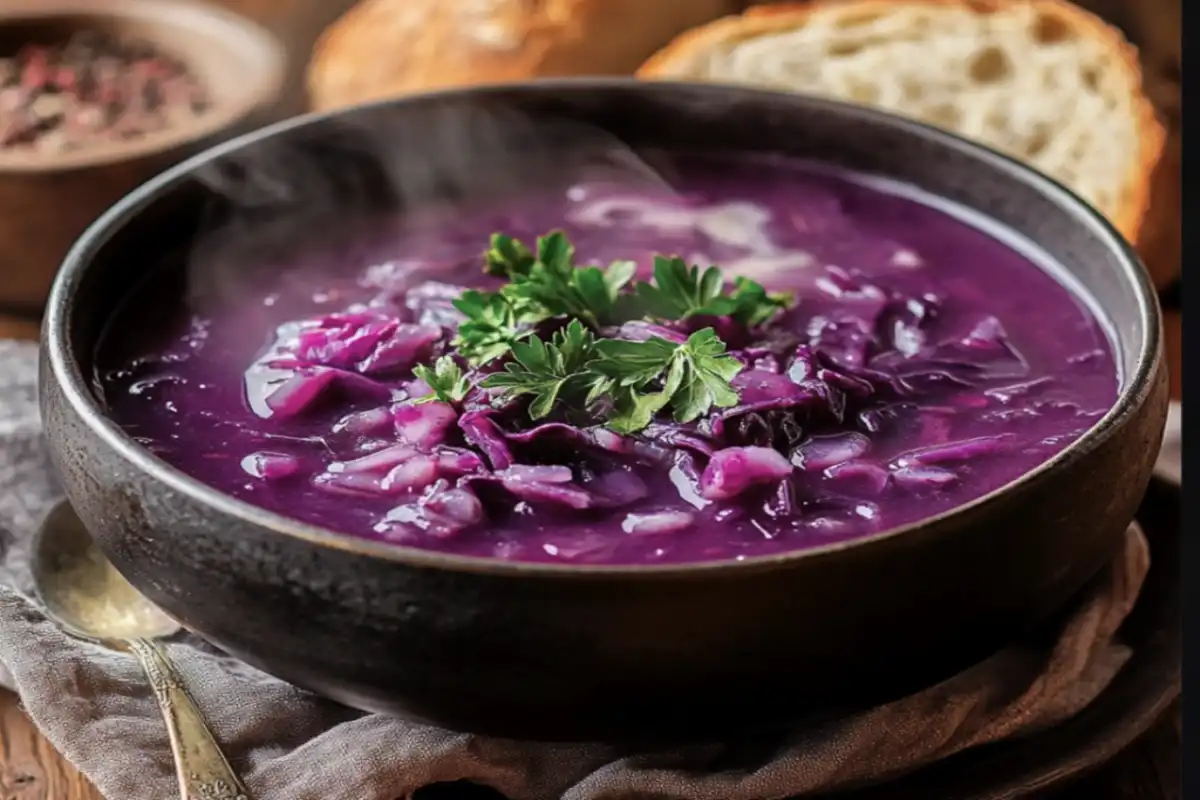Red cabbage is not only a beautiful vegetable with its vibrant purple hue, but it is also packed with vitamins, minerals, and beneficial compounds that contribute significantly to your health. To truly unlock the maximum health potential of red cabbage, it’s essential to learn about the healthiest ways to consume it, whether raw or cooked.In this article, we will explore the many health benefits of red cabbage, various ways to prepare it, and answer common questions about the vegetable. Let’s dive in and find out what is the healthiest way to eat red cabbage.

1. Introduction to Red Cabbage
Red cabbage, also called purple cabbage, is a cruciferous vegetable that belongs to the Brassica family, which also includes broccoli, cauliflower, and Brussels sprouts. Unlike its green counterpart, red cabbage is rich in anthocyanins, which give it its striking color. These powerful antioxidants are associated with numerous health benefits, from reducing inflammation to enhancing heart health.
People often wonder what is the healthiest way to eat red cabbage, and the answer largely depends on the individual’s needs. Whether you enjoy it raw in salads or prefer it cooked in various dishes, red cabbage is a versatile addition to your diet that can offer exceptional benefits.
2. Nutritional Value
Red cabbage is a nutritional powerhouse. It is low in calories yet rich in fiber, vitamins, and minerals. Here are some of the key nutrients found in red cabbage:
- Vitamin C: Red cabbage is an excellent source of vitamin C, an essential antioxidant that helps boost the immune system, protect cells, and improve skin health.
- Vitamin K: This vitamin is crucial for blood clotting and bone health.
- Fiber: The high fiber content aids digestion and promotes a healthy gut.
- Anthocyanins: The pigment responsible for red cabbage’s color, anthocyanins have potent antioxidant properties.
- Folate: Essential for cell growth and development, especially during pregnancy.
- Potassium: Helps regulate fluid balance, muscle contractions, and nerve signals.
- Calcium: Supports bone health and proper functioning of nerves and muscles.
- Magnesium: Important for muscle function, nerve function, and supporting immune health.
With such a diverse nutrient profile, red cabbage is an ideal vegetable for those looking to improve their overall health.
3. Health Benefits
Red cabbage comes with a host of health benefits, largely thanks to its abundance of vitamins, antioxidants, and minerals. Here’s why adding red cabbage to your diet can boost your overall health:
- Rich in Antioxidants: Anthocyanins found in red cabbage are potent antioxidants that fight off free radicals, reducing the risk of chronic diseases like cancer.
- Boosts Immunity: Due to its high vitamin C content, red cabbage can help strengthen your immune system and protect against common colds and infections.
- Promotes Heart Health: The combination of fiber, potassium, and antioxidants like anthocyanins can significantly benefit heart health by reducing cholesterol levels and improving circulation.
- Improves Digestion: The fiber in red cabbage not only helps maintain a healthy digestive system but also promotes regular bowel movements and reduces constipation.
- Anti-Inflammatory Properties: The antioxidants in red cabbage can help reduce inflammation, which is beneficial for those with arthritis or other inflammatory conditions.
- Supports Bone Health: The calcium, magnesium, and vitamin K content in red cabbage contribute to better bone health, reducing the risk of osteoporosis.
- Helps in Weight Management: Being low in calories and high in fiber, red cabbage can keep you full longer, which can help in weight management and reducing overeating.
- Detoxification: Red cabbage contains sulfur compounds that can assist in detoxifying the liver and boosting overall detox processes in the body.
4. The Healthiest Ways to Eat Red Cabbage
One of the key questions that many people have is what is the healthiest way to eat red cabbage? There are various ways to eat red cabbage, and each offers its own unique benefits. Let’s break down the different methods to help you decide which suits your health goals best.
Eating Red Cabbage Raw
Eating red cabbage raw preserves the maximum amount of nutrients. The vitamin C content, for instance, remains at its highest when cabbage is uncooked. Raw red cabbage is also a great source of fiber, which helps promote gut health and regulate blood sugar levels.
- In Salads: Add finely shredded red cabbage to salads for a colorful crunch.
- As a Side: Use raw red cabbage as a slaw to accompany sandwiches, tacos, or burgers.
- In Smoothies: Adding red cabbage to smoothies may sound unconventional, but it adds a slight sweetness and provides a nutritional boost without affecting the taste too much.
Cooking Methods for Red Cabbage
While raw cabbage has its benefits, cooking red cabbage can also enhance some of its nutrients and make it easier to digest.
Steaming
Steaming red cabbage is one of the healthiest cooking methods. It helps to retain most of the vegetable’s vitamins and minerals while softening its texture, making it easier to digest. Steamed cabbage is particularly rich in antioxidants and is more comfortable for those with sensitive stomachs.
- How to Steam: Simply chop the cabbage and place it in a steamer basket over boiling water. Steam for 5-7 minutes or until tender.
Fermentation
Fermenting red cabbage to make sauerkraut is another extremely healthy option. Fermentation enhances red cabbage’s probiotic content, which is excellent for gut health. Fermented red cabbage can improve digestion, boost immunity, and enhance nutrient absorption.
- How to Make Sauerkraut: Slice red cabbage thinly, add salt, and leave it to ferment for several weeks in an airtight container. This simple process increases the availability of probiotics.
Boiling vs. Roasting
Boiling can cause nutrient loss, particularly of water-soluble vitamins like vitamin C. However, boiling may still be a good option if you are aiming to enjoy a softer texture.
Roasting red cabbage, on the other hand, can bring out a sweeter flavor while maintaining a good level of nutrients. Toss chopped cabbage with olive oil and roast it in the oven for a caramelized, flavorful dish.
- How to Braise: Combine sliced red cabbage with sliced apples, a bit of vinegar, and some broth. Simmer for 30-45 minutes until tender.
Sautéing
Sautéing red cabbage is a quick and easy way to cook it while retaining most of its nutrients. This method works well for stir-fry dishes and side dishes.
- How to Sauté: Heat a pan with a little olive oil, add sliced cabbage, and cook for 5-7 minutes. Add spices or sauces to enhance the flavor.
5. Tips for Enhancing Red Cabbage’s Digestibility
Red cabbage is incredibly healthy, but some people find it hard to digest. Here are some tips to make red cabbage more digestible:
- Cook it Slightly: Cooking breaks down some of the fiber and makes it easier to digest compared to eating it raw.
- Fermentation: Fermented red cabbage is rich in probiotics, which enhance digestion.
- Chew Thoroughly: Thoroughly chewing helps the digestive enzymes to break down the cabbage more effectively.
- Add Spices: Incorporate spices like cumin, ginger, or fennel, which can help alleviate gas and bloating.
- Pair with Healthy Fats: Adding a small amount of healthy fats like olive oil can help improve nutrient absorption, especially fat-soluble vitamins like vitamin K.
- Avoid Overeating: Red cabbage is high in fiber, which can be difficult for some to digest in large quantities. Start with small portions and gradually increase the amount.
6. Frequently Asked Questions
How to Make Red Cabbage More Digestible?
The best way to make red cabbage more digestible is by cooking it slightly. Cooking reduces the fiber content, making it easier on the stomach. Another effective way is to ferment red cabbage, which increases its probiotic content, aiding digestion.
Does Cooking Red Cabbage Remove Nutrients?
Yes, cooking red cabbage can cause some nutrient loss, particularly water-soluble vitamins like vitamin C. However, some cooking methods, like steaming, help preserve more nutrients compared to boiling. Also, cooking can increase the availability of certain antioxidants.
Is Cabbage Healthier Eaten Raw or Cooked?
Both raw and cooked red cabbage have their health benefits. Eating it raw retains more vitamin C and fiber, while cooking enhances the bioavailability of some antioxidants and makes it easier to digest. Steaming, braising, and fermentation are among the healthiest cooking methods.
Is It OK to Eat Red Cabbage Every Day?
Yes, it is generally okay to eat red cabbage every day in moderate amounts. However, because cabbage is high in fiber, eating it daily in large quantities could cause digestive discomfort. Incorporate a balance of raw and cooked cabbage to optimize the benefits.
7. Recipe Ideas

To incorporate more red cabbage into your diet, here are a few delicious and healthy recipes:
Red Cabbage Salad
A refreshing raw salad with shredded red cabbage, carrots, and a tangy vinaigrette.
- Ingredients: Red cabbage, carrots, apple cider vinegar, olive oil, salt, pepper.
- Instructions: Combine shredded cabbage and carrots in a bowl, mix with the vinaigrette, and let it sit for 15 minutes to absorb flavors.
Red Cabbage Soup
This warm and comforting soup is perfect for a cold day, packed with nutrients.
- Ingredients: Red cabbage, onion, garlic, vegetable broth, potatoes, carrots.
- Instructions: Sauté onions and garlic, add chopped cabbage, carrots, potatoes, and broth, then simmer until vegetables are tender.
Stir-fried Red Cabbage
Quick and easy stir-fried cabbage makes for a tasty side dish.
- Ingredients: Red cabbage, olive oil, garlic, soy sauce.
- Instructions: Heat oil in a pan, add garlic, then add shredded cabbage and stir-fry for 5-7 minutes.
Fermented Red Cabbage (Sauerkraut)
Boost your gut health with homemade sauerkraut.
- Ingredients: Red cabbage, sea salt.
- Instructions: Slice the cabbage thinly, sprinkle with salt, and massage until it releases water. Pack tightly into a jar, ensuring the cabbage is submerged in its juices, and let it ferment for 1-2 weeks.
Braised Red Cabbage
A traditional side dish that’s rich in flavor and nutrients.
- Ingredients: Red cabbage, apples, onion, apple cider vinegar, vegetable broth, olive oil, salt, pepper.
- Instructions: Heat oil in a large pan, add chopped onions, apples, and cabbage. Add apple cider vinegar and broth, cover, and cook on low for 30-45 minutes until tender.
Red Cabbage Smoothie
A vibrant smoothie that packs a nutritional punch.
- Ingredients: Red cabbage, banana, apple, Greek yogurt, honey, water.
- Instructions: Combine all ingredients in a blender and blend until smooth. Adjust consistency with water as needed.
8. Conclusion
Red cabbage is a vibrant and versatile vegetable that can benefit your health in many ways. Whether you enjoy it raw, steamed, fermented, roasted, braised, or sautéed, each method of preparation has its unique advantages. The healthiest way to eat red cabbage largely depends on your individual preferences and digestive comfort. To make the most of its incredible nutrient profile, include a mix of both raw and cooked red cabbage in your diet.
Incorporating red cabbage into your meals is a simple and effective way to enhance your overall health, from improving digestion to boosting immunity. Don’t hesitate to try different recipes and find what works best for you. Whether you’re adding a crunch to your salad or enjoying a warm cabbage soup, you’re making a great choice for your health.
Adding a variety of preparations also ensures you don’t get bored and can consistently enjoy this nutritious powerhouse. Experiment with different recipes and remember that the key to a healthy diet is balance, moderation, and enjoying the process of cooking and eating wholesome foods.

